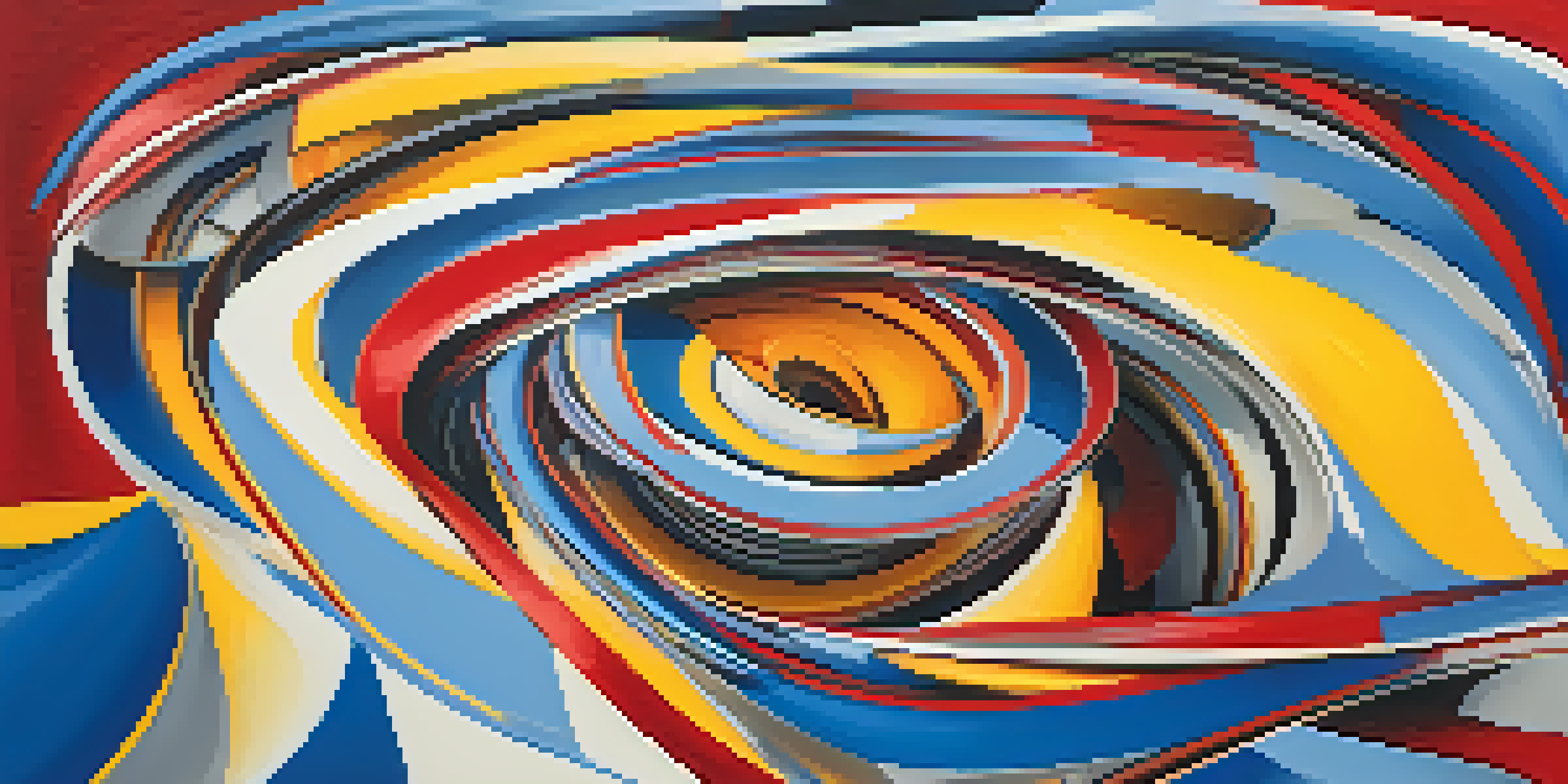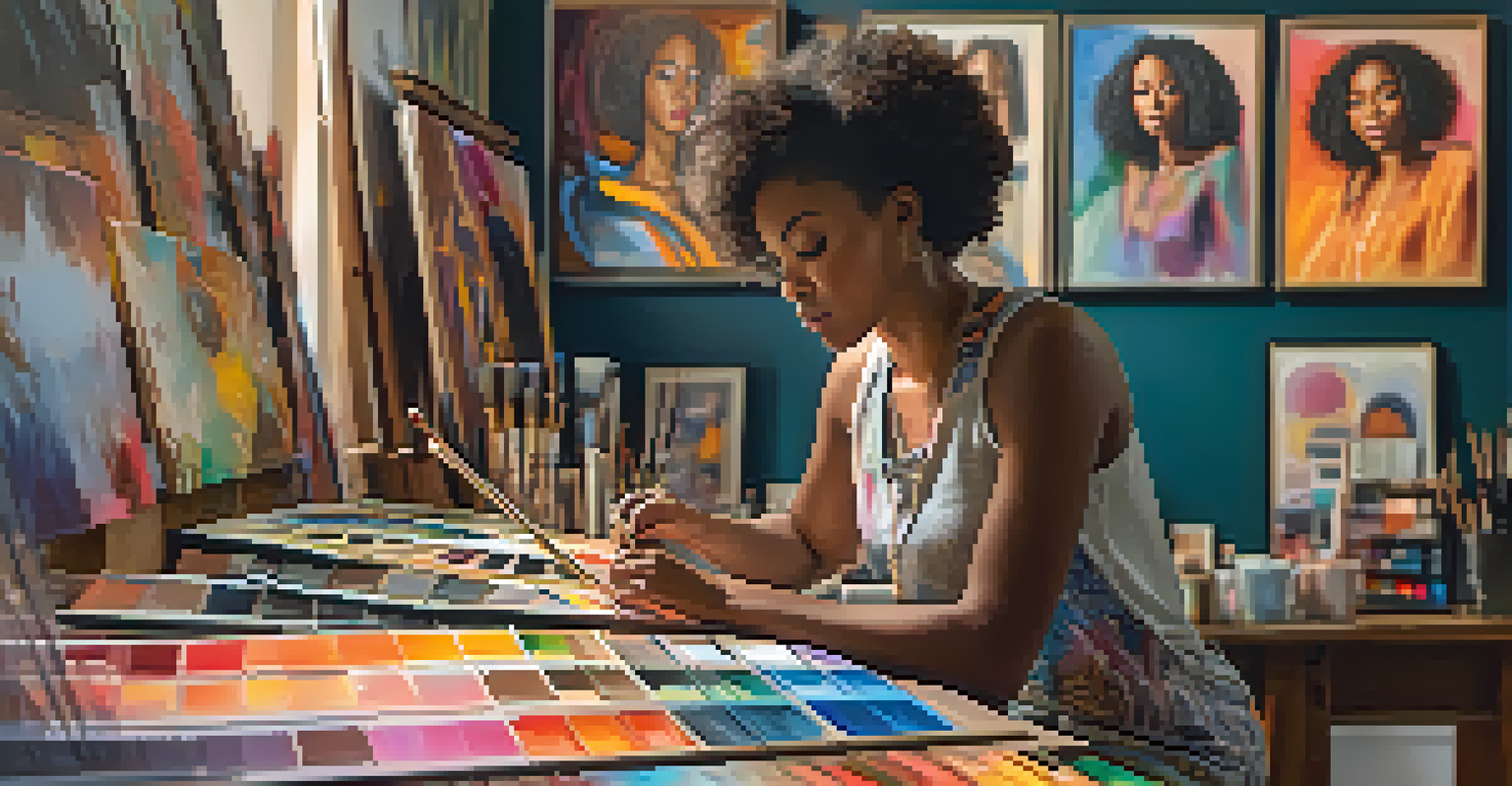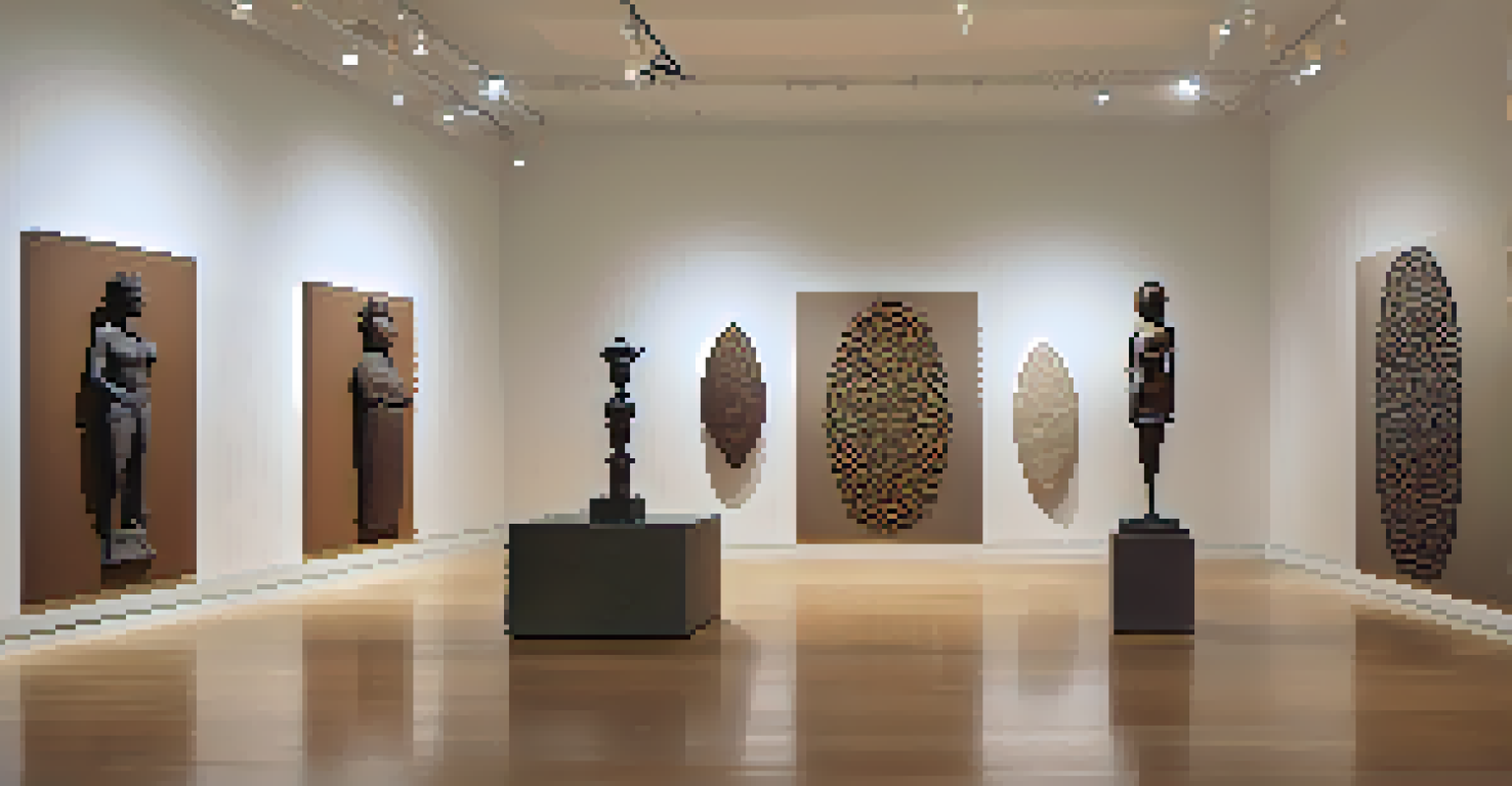Intersectionality in Painting: Beyond Gender and Race

Understanding Intersectionality in Art
Intersectionality is a term that emerged from feminist theory, highlighting how various social identities like race, gender, sexuality, and class intersect. In the world of art, this concept allows us to explore how different experiences influence an artist's work. By examining these intersections, we can gain a deeper understanding of the narratives and themes present in contemporary painting.
Art is a way of expressing our identity, our culture, and our experiences. It reflects who we are in a multifaceted world.
For example, a painting created by a Black female artist might reflect not only her gender and race but also her experiences related to socioeconomic status or cultural heritage. These layers create a richer dialogue about identity and representation in art. As viewers, acknowledging these intersections invites us to engage more thoughtfully with the artwork.
Ultimately, understanding intersectionality in art helps us appreciate the complexity of identity and the myriad ways it manifests visually. This awareness encourages us to look beyond surface-level interpretations and delve into the deeper stories that paintings can tell.
The Role of Gender in Modern Painting
Gender has long been a focal point in discussions of identity in art. Many contemporary female artists challenge traditional notions of femininity and masculinity through their work. By addressing gender roles, these artists not only empower themselves but also invite viewers to rethink societal expectations surrounding gender identity.

For instance, artists like Judy Chicago and Frida Kahlo have used their paintings to comment on women's experiences and challenge patriarchal narratives. Their art often intertwines personal stories with broader social issues, illustrating how gender influences not just identity, but also artistic expression. Such works remind us that art can be a powerful tool for social change.
Intersectionality Enriches Art
Understanding intersectionality allows viewers to appreciate the complex identities and narratives that shape contemporary art.
Moreover, as more diverse voices gain recognition in the art world, we see a shift toward a more inclusive understanding of gender. This evolution is crucial in creating a space where all artists can express their unique experiences and contribute to the ongoing dialogue about gender in art.
Race and its Impact on Artistic Expression
Race significantly shapes the experiences and perspectives of artists, influencing their work in profound ways. Many contemporary painters explore their racial identities, confronting stereotypes and cultural narratives through their art. This exploration not only serves as a form of self-expression but also fosters dialogue about race relations in society.
The role of the artist is to make the revolution irresistible.
Take the work of artists like Kehinde Wiley, who reimagines classical portraiture to reflect Black identity and culture. His vibrant paintings challenge historical depictions and empower subjects often overlooked in traditional art. By centering race in his work, Wiley creates a space for critical reflection on representation and visibility in art.
Through such artistic endeavors, the conversation around race in painting becomes more nuanced. It encourages viewers to consider the broader implications of race and identity, allowing for a deeper connection to the artwork and its message.
Exploring Class and Socioeconomic Status in Art
Socioeconomic status plays a crucial role in shaping an artist's experiences and the subjects they choose to depict. Many contemporary painters use their work to comment on class disparities, highlighting issues of wealth, poverty, and access to resources. This exploration can reveal stark contrasts and provoke thought around societal structures that affect everyday lives.
For example, artists like Banksy tackle themes of class through street art, often using satire to critique consumerism and social inequality. His work resonates with a wide audience, sparking conversations about the intersection of art and activism. This approach emphasizes how art can serve as a mirror reflecting societal issues.
Gender Challenges Traditional Norms
Contemporary female artists are redefining gender roles through their work, fostering empowerment and social change.
By incorporating class into their narratives, artists invite viewers to confront uncomfortable truths about the world we live in. This dialogue encourages a more comprehensive understanding of the factors influencing artistic expression and the messages conveyed through painting.
Cultural Heritage and Artistic Identity
Cultural heritage is a significant aspect of intersectionality, influencing how artists perceive themselves and their work. Painters often draw on their cultural backgrounds to inform their artistic practices, creating a bridge between tradition and contemporary expression. This blending can result in powerful visual narratives that resonate with diverse audiences.
Consider the work of artists like Yayoi Kusama, whose Japanese heritage deeply informs her distinctive style. Her use of patterns and motifs reflects her cultural roots while also addressing themes of infinity and mental health. By merging personal and cultural history, Kusama's paintings become a celebration of identity and creativity.
Through the lens of cultural heritage, artists remind us that their identities are shaped by a multitude of experiences. This perspective enriches the art world, inviting us to appreciate the vibrant tapestry of narratives that contribute to contemporary painting.
Intersectionality in Abstract and Conceptual Art
While traditional forms of painting often focus on representation, abstract and conceptual art offer unique opportunities to explore intersectionality. These styles allow artists to express complex identities and emotions without being confined to specific subjects. This freedom can lead to innovative approaches that challenge conventional expectations of what art should be.
Artists like Mark Rothko and Wassily Kandinsky utilized color and form to evoke feelings and ideas that transcend literal representation. Their work invites viewers to engage with art on a more emotional and intellectual level. In this way, abstract and conceptual art can encapsulate the essence of intersectionality by reflecting the multifaceted nature of human experience.
Cultural Heritage Shapes Identity
Artists draw on their cultural backgrounds to create compelling narratives, bridging tradition and modern artistic expression.
Moreover, the absence of clear subjects in abstract art encourages diverse interpretations, allowing viewers to connect with the work on personal levels. This openness fosters a dialogue about identity that is both inclusive and expansive, making room for various narratives to coexist.
The Future of Intersectionality in Painting
As the art world continues to evolve, the concept of intersectionality will play an increasingly important role in shaping artistic expression. Emerging artists are more likely to embrace diverse identities and experiences, creating work that reflects the complexities of modern life. This shift not only enriches the art scene but also fosters a greater understanding of the world around us.
Art institutions and galleries are also becoming more aware of the need for inclusivity in their exhibitions and collections. As they strive to represent a wider range of voices, we can expect to see more works that explore intersectionality in innovative ways. This change will help to elevate underrepresented artists and their unique perspectives.

Ultimately, the future of intersectionality in painting promises to be vibrant and dynamic. As artists continue to push boundaries and challenge norms, we can look forward to a rich tapestry of narratives that invite us to think critically about identity, society, and the human experience.